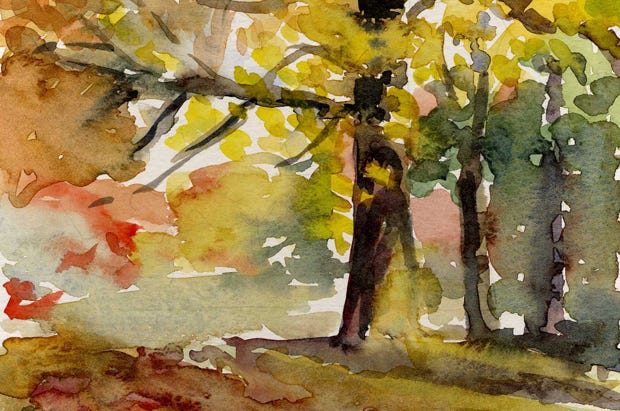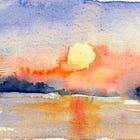Functional hope tempers despair
Considering St. Francis' famous prayer, line by line
Where there is despair, hope;
Hope is my talisman. It’s only recently that I’ve begun to consider its role in my ongoing struggle with despair and apathy.1
For a long time, I kept quiet about my attraction to hope. Among environmentalists, hope has been derided as naïve optimism. Seen as passive and clueless in the face of harsh realities—the facts and data of losing battles against the continued escalating orgy of consumption that is ruining the earth, our only home. Despairing activists wonder what hope is possible in the face of upward trending climate chaos, refugees, extinctions, superstorms, fossil fuel titans’ capture of COP, burning rainforests, greed piling ruin on ruin.
Peddling hope is seen as irresponsible sabotage of the clear-headed warriorship necessary to combat evil. Save hope for later—after we’ve won the battles. Yet this sort of either/or thinking perpetuates the mess we’re in. Separating humanity into “us-versus-them” is a trap that closes off the very fuel we need to succeed. Hope isn’t a cause or effect. Hope isn’t a reason or an outcome. Hope is a holy force that flows through all of life, whether we’re aware of it or not.
“Hope effectuates what blooms not because hope dwells in the human will but because it does not. We tap into hope.” ~ Renée Eli, PhD2
In The Hope, Andrew Harvey advocates what he calls “spiritual activism” to unite the best of both worlds. The cooling nourishment of spiritual practice grounds the fierce, exhausting work of activism. Harvey demonstrates that Rumi’s poems cultivate the humility, faith and presence that these times of disaster and despair demand of us.
The grapes of my body can only become wine
After the winemaker tramples me.
I surrender my spirit like grapes to his trampling
So my inmost heart can blaze and dance with joy.
Although the grapes go on weeping blood and sobbing
“I cannot bear any more anguish, any more cruelty”
The trampler stuffs cotton in his ears: “I am not working in ignorance
You can deny me if you want, you have every excuse,
But it is I who am the Master of this Work.
And when through my Passion you reach Perfection,
You will never be done praising my name.”~ Rumi
A while back, I made a graphic recording during a meeting of Baltimore’s Sustainability Commission. We heard about all the inspiring projects in our city— a great momentum of positive initiatives on trash, renewable energy, vacant lots, urban farming, social enterprise, parks and beauty. The thread weaving it all together was community, solid work to bring people together around the common vision of a healthy, prosperous, vibrant city for all. I was struck by these projects as tangible expressions of hope. Hope in action.
“We abide in hope not because we believe our hope will make what we hope be so but because we know that without hope it cannot be so.” ~ Renée Eli, PhD3
Tempering despair with hope is both a spiritual practice and the embrace of good, necessary work. The wise elder Joanna Macy speaks of a dynamic balance: the fire of compassionate action and the coolness of contemplation and meditation. Fire and water, both. Macy’s book, Active Hope, is full of practices and stories for cultivating hope. The book’s subtitle, “How to face the mess we’re in without going crazy,” says it all. In any era, the only way out is through.
Such an open-hearted engagement with hope reminds me of “functional intelligence,” that quality defined by psychologists in people who are generally good at life. Having a high IQ or good grades doesn’t guarantee success if you can’t negotiate the day-to-day challenges of life. Studies of people with high functional intelligence show that they have practical, realistic, all-around skills to cope, even to thrive, in any circumstance, no matter what life throws at them.
That’s the kind of hope I want to cultivate: a functional hope. Today, I will invite the holy energy of hope to embrace and befriend my despair and to open my heart to possibility.
The previous line of the prayer, Where there is doubt, faith; is here.
Start at the beginning of the series:
If you enjoyed this post, a lovely ❤️ keeps me going. Another way to show love is to share this post with others by restacking it on Notes, via the Substack app. Thanks!
This newsletter was originally called Building Hope. I collected my favorite quotes in an early post, “Hope is how we give ourselves to the future,” the title inspired by the great Rebecca Solnit.





“The greatest danger to our planet is we loose hope.” Jane Goodall. Hope is having a plan for a better future and striving for it. It may be quixotic but what other life can there be.
“There is a saying in Tibetan, 'Tragedy should be utilised as a source of strength.'
No matter what sort of difficulties, how painful experience is, if we lose our hope, that's our real disaster.” Dalai Lama XIV
Julie these essays are outstanding 🙏🏼